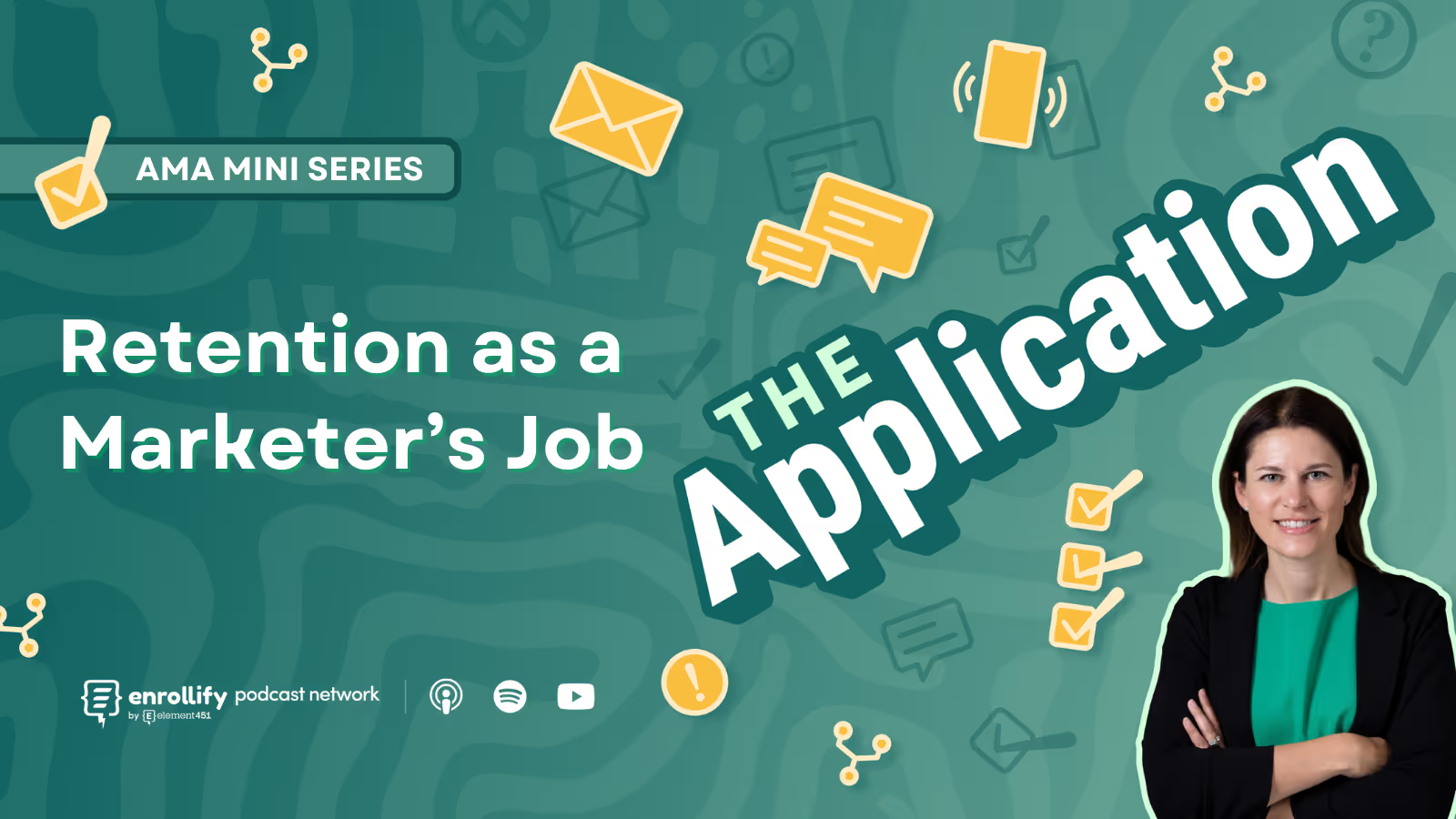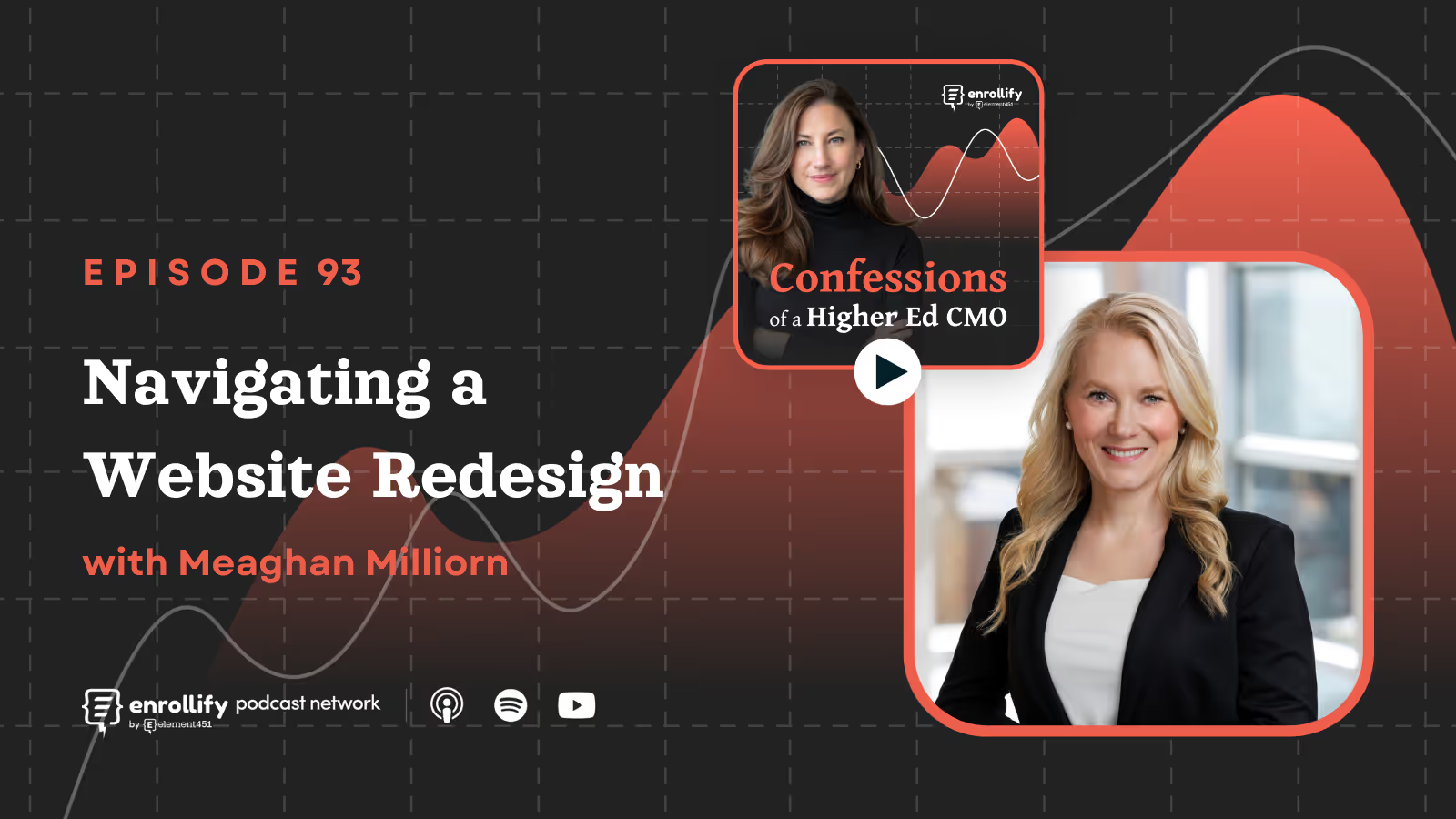About the Episode
About the Episode:
In this episode of The Higher Ed Pulse, hosts Seth and Mallory dive into the world of “Sprint Campaigns” in higher education marketing. Seth shares insights on how these fast-tracked, zero-budget campaigns are transforming marketing efforts at colleges and universities. By repurposing existing assets and using innovative strategies, institutions can improve performance in just 60 to 120 days without major new investments. Tune in to learn how to implement this cost-effective approach in your own marketing initiatives.
Key Takeaways
- Sprint campaigns are a zero-budget way to refresh marketing content and improve performance quickly.
- Repurposing existing assets like videos and images can drive better engagement, reducing the need for costly new productions.
- Qualifying existing value propositions (e.g., ranking by specific region or category) can position your institution more effectively.
- Institutions often underutilize the volume of ads—expanding ad variations can enhance machine learning and improve results.
- Sprint campaigns can bypass lengthy approval processes by reworking content that has already been approved.
Episode Summary
In this episode of The Higher Ed Pulse, Seth and Mallory focus on a creative and practical solution for institutions looking to refresh their brand presence—Sprint Campaigns. Seth introduces this concept, developed at Kanahoma, as a fast and efficient method to drive performance in higher education marketing, all without the hefty time and budget associated with traditional brand campaigns.
So, what exactly is a Sprint Campaign? Seth describes it as a method to launch a new brand campaign in just 60 to 120 days, using existing assets and content rather than investing in new productions. The beauty of this process is its simplicity: gather all of your institution's photo and video assets—anything that’s already been created over the past several years—and repurpose them into fresh, compelling ad content. By doing so, institutions can see results quickly, improving their marketing efforts without waiting for a full year or more to develop new materials.
One of the key insights Seth shares is that many institutions fail to fully leverage the content they already have. He explains that the first step in a Sprint Campaign is conducting a thorough audit of all available creative materials. Institutions often have a treasure trove of photos, videos, and other assets that can be recut and repurposed to fit modern ad formats, particularly for platforms like Facebook and Instagram where short, vertical videos perform exceptionally well. Interestingly, content that’s several years old can still be highly effective—especially considering most prospective students are encountering the institution’s brand for the first time.
Seth also highlights a few crucial tips: for example, using images where subjects make eye contact with the viewer significantly boosts ad performance. Another big takeaway is the importance of producing a high volume of ads—more than 250 ads running at once—to take advantage of machine learning algorithms on platforms like Facebook and Google. By creating variations of high-performing content, institutions can better understand what resonates with prospective students, driving up engagement and conversions.
As Mallory plays devil’s advocate, pointing out that institutions often have entrenched approval processes and slow-moving decision-making, Seth provides a clever solution: because Sprint Campaigns are all about refining existing content, they don’t necessarily require new approvals from committees. Instead, marketing teams can simply repackage already approved materials and reintroduce them in innovative ways. This approach enables faster execution and immediate results, making it an attractive option for institutions strapped for time and resources.
Seth’s main piece of advice for institutions hesitant to try a Sprint Campaign? Focus on what you can do with the content you already have. It’s all about making the most of existing resources and bringing fresh energy to marketing efforts without the need for massive new investments.
For those looking to explore innovative, low-cost solutions in higher education marketing, this episode is a must-listen. And if you’re curious about the future of college admissions marketing, be sure to check out The Higher Ed Pulse’s ongoing series, High School to Higher Ed, where a father-daughter duo shares insights on how high school students perceive the college admissions process.
Connect With Our Hosts:
Mallory Willsea
https://www.linkedin.com/in/mallorywillsea/
https://twitter.com/mallorywillsea
Seth Odell
https://www.linkedin.com/in/sethodell/
https://twitter.com/sethodell
About The Enrollify Podcast Network: The Higher Ed Pulse is a part of the Enrollify Podcast Network. If you like this podcast, chances are you’ll like other Enrollify shows too!
Some of our favorites include Generation AI and Confessions of a Higher Education Social Media Manager.
Enrollify is produced by Element451 — the next-generation AI student engagement platform helping institutions create meaningful and personalized interactions with students. Learn more at element451.com.
Element451 is hosting the AI Engage Summit on Oct 29 and 30. Register now for this free, virtual event.The future of higher ed is being redefined by the transformative power of AI. The AI Engage Summit brings together higher ed leaders, innovators, and many of your favorite Enrollify creators to explore AI’s impact on student engagement, enrollment marketing, and institutional success.
Experience firsthand how AI is improving content personalization at scale, impacting strategic decision-making, and intuitively automating the mundane tasks that consume our time. The schedule is packed with real examples and case studies, so you leave knowing how to harness AI to drive meaningful change at your institution.
Whether you’re looking to enhance student outcomes, optimize enrollment marketing, or simply stay ahead of the curve, the AI Engage Summit is your gateway to the next level of higher education innovation. Registration is free, save your spot today.















